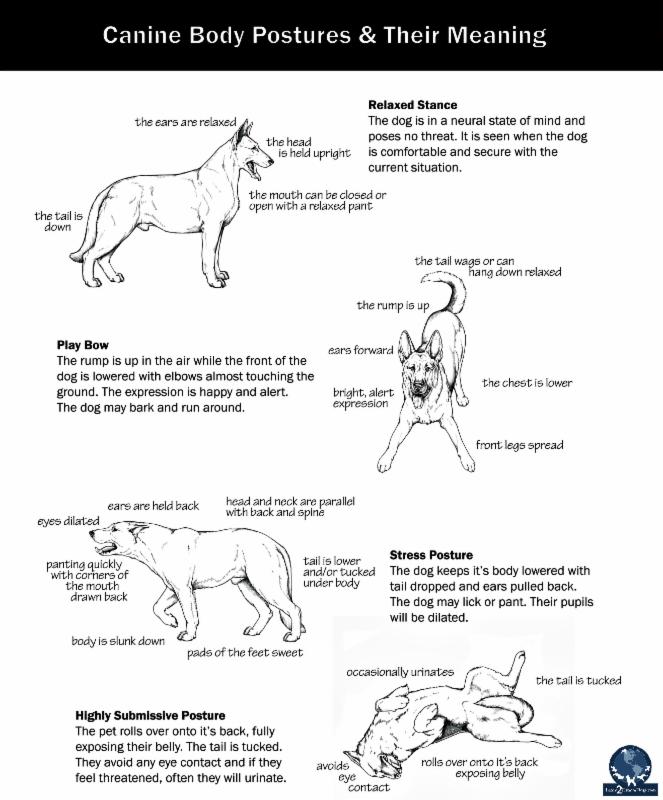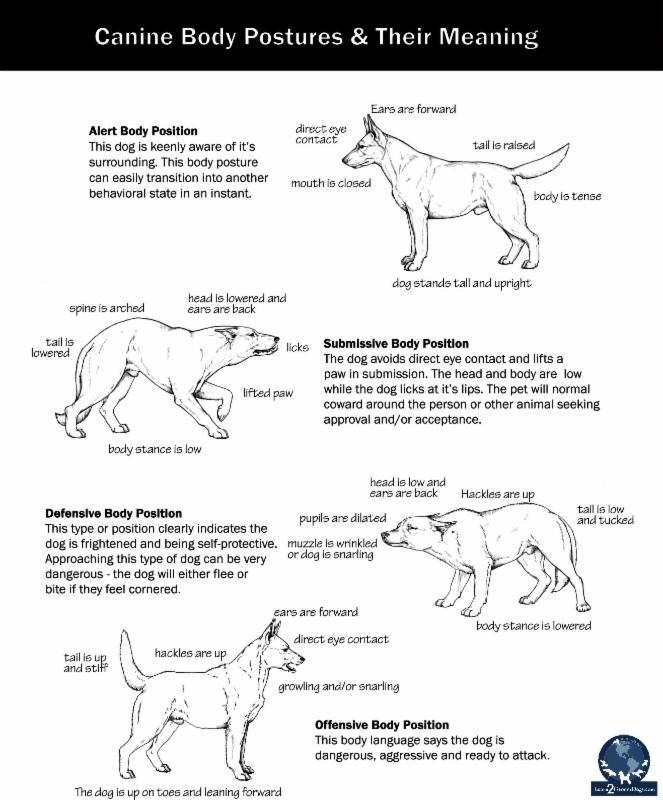 Many of us are seeing a lot of pets that are ready for a great makeover. With that in mind, I thought it was the perfect time to revisit my blog on salvage work.
Many of us are seeing a lot of pets that are ready for a great makeover. With that in mind, I thought it was the perfect time to revisit my blog on salvage work.
As many of you know, I’m a big dog person. Working on these large furry dogs that have a huge shedding problem is one of my favorite things to do in a grooming salon. I know, I know, call me crazy – but I just love seeing the transformation in this type of job. Over the years I’ve gotten really quick with the process and rarely cringe, no matter what the size of the dog, nor the condition – I see it as a fun challenge!
My #1 rule is: Never work on a dirty dog. If water can penetrate the coat, let your products do the job.
Working on a dirty dog is not only unpleasant, but it also takes longer to do. Plus, there will be a lot of coat damage and breakage. A dirty coat is dry and brittle. The dirt and dander trapped within the fur makes it more difficult to brush out. Working on a clean coat will be easier for both you and the pet – and much more pleasant.
If there are large chunks that water cannot penetrate, go ahead and break up the tangle using the tool that is safe for the pet. Don’t worry about removing it completely, just break it apart so the water and shampoo can do its job.
Prepare your bathing area. If the dog is exceptionally dirty, use a shampoo especially designed for dirty dogs. Using a follow-up treatment of a skin and coat conditioner after bathing twice (or maybe three times in some areas) will assist with the brush out and dead coat removal during the drying process. Make sure you have all the tools you’ll need to aid in getting the dog clean like rubber curries or scrub brushes. And make sure you have plenty of towels handy. To see my video lesson on salvage work at Learn2GroomDogs.com, click here.
 My favorite trick when working with this type of job is to bring my high velocity dryer right into the bathing area (bring your eye and ear protection, too!). With the dog fully lathered, blow the shampoo right off the pets while they are tethered in the tub. The slippery soap will allow the dirt, loose coat, and tangles slide out, being trapped in the shampoo and sticking to the back wall of the tub, minimizing the mess. Not all the shedding coat or mats will be removed but a lot will, making your job easier once you transfer to the drying table. Once you have blown out the pet,follow up with the rinsing process. Repeat this process as many times as necessary to get the dog “squeaky clean.”Once the pet is clean and thoroughly rinsed, apply a skin and coat conditioning treatment before heading to the drying table. Read your directions: some conditioning treatments need to be rinsed out while others do not. Your high velocity dryer and a heavy slicker brush will be your best friends during the drying process.
My favorite trick when working with this type of job is to bring my high velocity dryer right into the bathing area (bring your eye and ear protection, too!). With the dog fully lathered, blow the shampoo right off the pets while they are tethered in the tub. The slippery soap will allow the dirt, loose coat, and tangles slide out, being trapped in the shampoo and sticking to the back wall of the tub, minimizing the mess. Not all the shedding coat or mats will be removed but a lot will, making your job easier once you transfer to the drying table. Once you have blown out the pet,follow up with the rinsing process. Repeat this process as many times as necessary to get the dog “squeaky clean.”Once the pet is clean and thoroughly rinsed, apply a skin and coat conditioning treatment before heading to the drying table. Read your directions: some conditioning treatments need to be rinsed out while others do not. Your high velocity dryer and a heavy slicker brush will be your best friends during the drying process.
Rule # 2: Be Methodical and Thorough
First, blow out as much moisture and loose coat at possible with the air flow. Use the highest power setting the pet is comfortable with, and a condenser cone. Once you have pushed as much water and loose fur from the pet, remove the condenser cone, and bring the air flow close to the pet’s skin. “Boost” any loose coat out of the dog by lightly patting the area where the air is striking the skin with a slicker brush.
Continue to work over the dog in a methodical manner until your brush glides through the coat easily and no more loose coat is trapped in the brush.
Rule #3 – ENJOY!
When the dog is complete, it should smell clean and fresh. The coat should be glossy and float freely as the dog moves. There should be an irresistible desire to reach down and bury your hands in a freshly groomed pet.
What are your best methods? Jump over to the Learn2GroomDogs Facebook page and tell us about it!
Happy Trimming!
~ Melissa







 Did you know about half of all small businesses fail within the first four years? It’s a scary statistic, but fortunately, you’re not one of the fallen. Your books are full. You’re grooming steadily all day long. The phones are ringing off the hook – it’s a dream come true, right?
Did you know about half of all small businesses fail within the first four years? It’s a scary statistic, but fortunately, you’re not one of the fallen. Your books are full. You’re grooming steadily all day long. The phones are ringing off the hook – it’s a dream come true, right?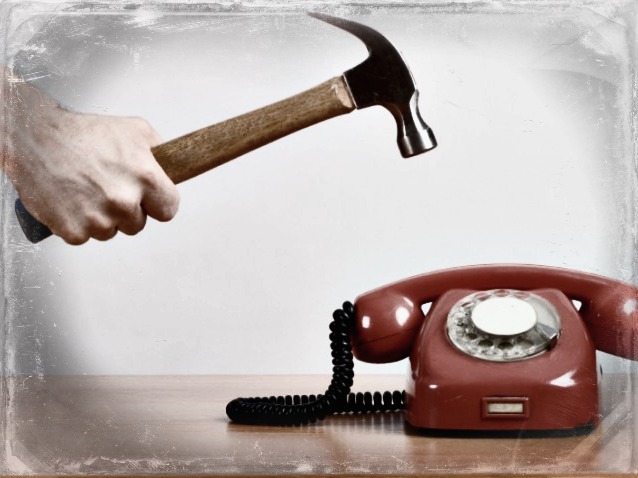 This is an age-old problem. I don’t know of a single successful grooming business that has not faced this dilemma at some point.
This is an age-old problem. I don’t know of a single successful grooming business that has not faced this dilemma at some point.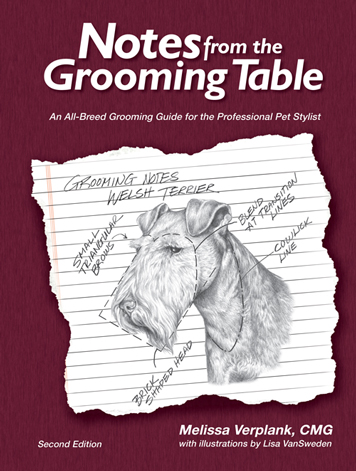 Delegate anything you can to assist with the smooth running of your business – or your home – which is not directly related to grooming.
Delegate anything you can to assist with the smooth running of your business – or your home – which is not directly related to grooming.
 “I have a (insert breed here). Do you know how to groom them correctly?”
“I have a (insert breed here). Do you know how to groom them correctly?” The Internet is an invaluable research tool. Use it wisely. Most breeds will have a parent club that hosts an official site for the breed. Spend a few minutes reviewing images of top winning dogs in their galleries. With a little luck, you may even find grooming directions or links to grooming directions from dedicated breeders.
The Internet is an invaluable research tool. Use it wisely. Most breeds will have a parent club that hosts an official site for the breed. Spend a few minutes reviewing images of top winning dogs in their galleries. With a little luck, you may even find grooming directions or links to grooming directions from dedicated breeders.
 As pet groomers and stylists, we get to see plenty of dogs. It’s rare and exciting to get a breed you are not familiar with. Most of us pros enjoy the challenge of learning about a new breed. Figuring out what we will need to do to make the dog look like it should – or could – look like if the owners allow you to groom it correctly.
As pet groomers and stylists, we get to see plenty of dogs. It’s rare and exciting to get a breed you are not familiar with. Most of us pros enjoy the challenge of learning about a new breed. Figuring out what we will need to do to make the dog look like it should – or could – look like if the owners allow you to groom it correctly.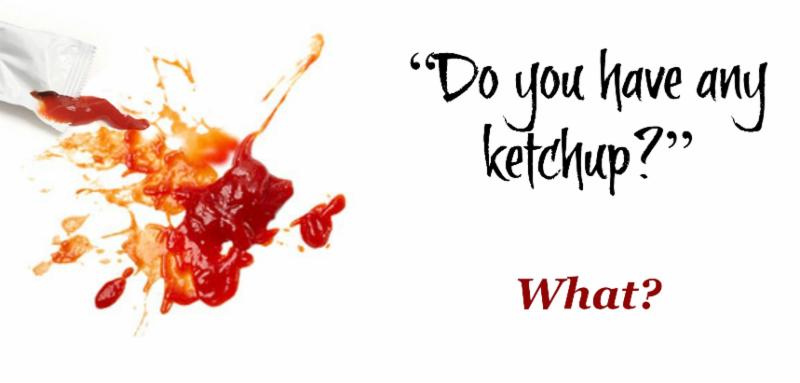 But how do you know exactly what to reach for when a unique situation presents itself? Sometimes you don’t always know what you need. Or maybe what you need is a specialty item and you don’t have it at your fingertips. What do you do then?
But how do you know exactly what to reach for when a unique situation presents itself? Sometimes you don’t always know what you need. Or maybe what you need is a specialty item and you don’t have it at your fingertips. What do you do then?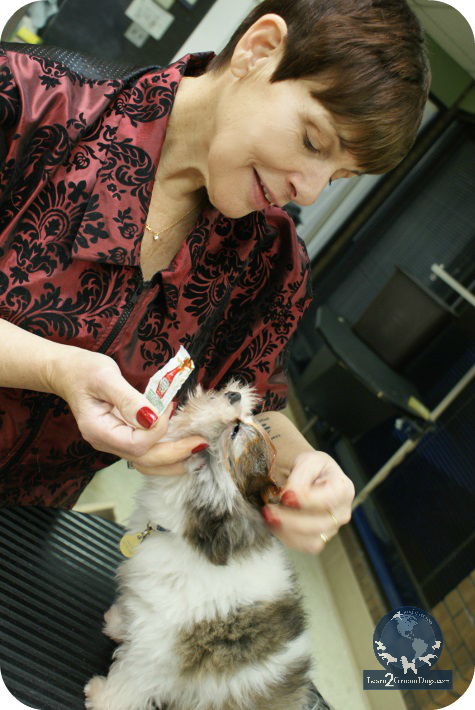 loving homes. The family supplying the dogs for the Learn2Groom film shoot had adopted three of the puppies. Many of the rescued pets were Shih Tzus, Pomeranians, Malteses, or mixes of the three breeds.
loving homes. The family supplying the dogs for the Learn2Groom film shoot had adopted three of the puppies. Many of the rescued pets were Shih Tzus, Pomeranians, Malteses, or mixes of the three breeds.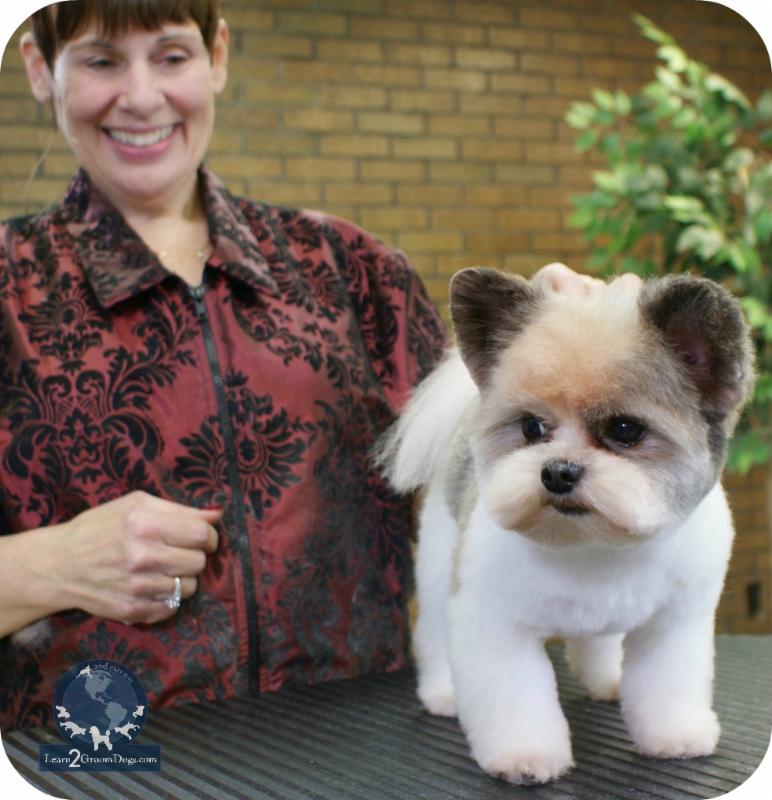 Sue suggested that we do a couple more applications in the future to really lighten the top of his head.
Sue suggested that we do a couple more applications in the future to really lighten the top of his head.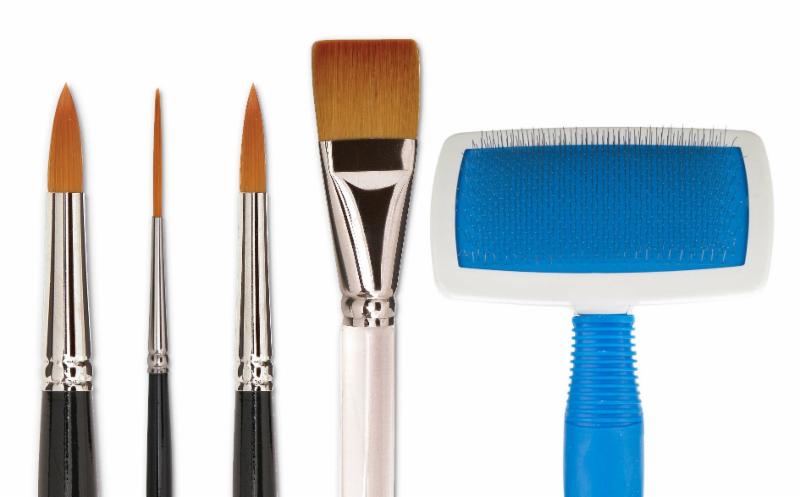 If you ask people in our industry if they think grooming and styling pets is an art form or a skilled trade, most would say that it’s a little of both. I agree. When you watch members of GroomTeam USA at work, their efforts are definitely works of art. Skills like theirs take years to develop. Today, I want to talk about one aspect of that development: learning to see like an artist.
If you ask people in our industry if they think grooming and styling pets is an art form or a skilled trade, most would say that it’s a little of both. I agree. When you watch members of GroomTeam USA at work, their efforts are definitely works of art. Skills like theirs take years to develop. Today, I want to talk about one aspect of that development: learning to see like an artist. So I’m staring at the page… what am I looking at? What am I looking for? When I’m staring at that blank sheet of paper, I’m seeing what I will put there. As I stare into that whiteness, I’m watching the colors and lines take shape in my mind and align themselves on the page. It’s like my mind has produced a transparency of the finished product and has mentally created an overlay onto the page. All I have to do is put the marks on the paper. If I’m sculpting, I’m staring at the lump of rock and seeing the shape of what I want to create in the stone. All I have to do is remove all the stuff around it and let it out.
So I’m staring at the page… what am I looking at? What am I looking for? When I’m staring at that blank sheet of paper, I’m seeing what I will put there. As I stare into that whiteness, I’m watching the colors and lines take shape in my mind and align themselves on the page. It’s like my mind has produced a transparency of the finished product and has mentally created an overlay onto the page. All I have to do is put the marks on the paper. If I’m sculpting, I’m staring at the lump of rock and seeing the shape of what I want to create in the stone. All I have to do is remove all the stuff around it and let it out.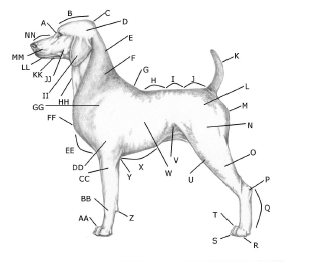 Trim styles are all about anatomy. Groomers need to know their breed standards and to know them they need to understand anatomy. If you’re a visual learner, get out your reference material and study the images until you can see them on any dog that walks into your salon. If you’re a tactile student and learn by doing, get those books out and learn to find reference points on dogs through your sense of touch. Feel where the point of rump is, the point of shoulder, and the barrel of the chest. If you can’t see them, learn your anatomy reference points by touch. Then learn to do both. Developing your knowledge base creates reliable instincts and reflexes.
Trim styles are all about anatomy. Groomers need to know their breed standards and to know them they need to understand anatomy. If you’re a visual learner, get out your reference material and study the images until you can see them on any dog that walks into your salon. If you’re a tactile student and learn by doing, get those books out and learn to find reference points on dogs through your sense of touch. Feel where the point of rump is, the point of shoulder, and the barrel of the chest. If you can’t see them, learn your anatomy reference points by touch. Then learn to do both. Developing your knowledge base creates reliable instincts and reflexes.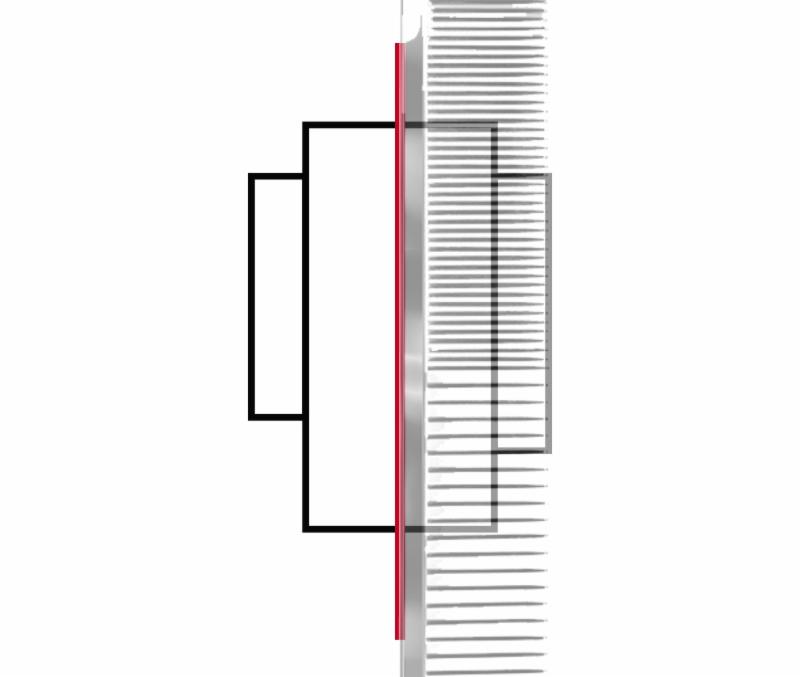
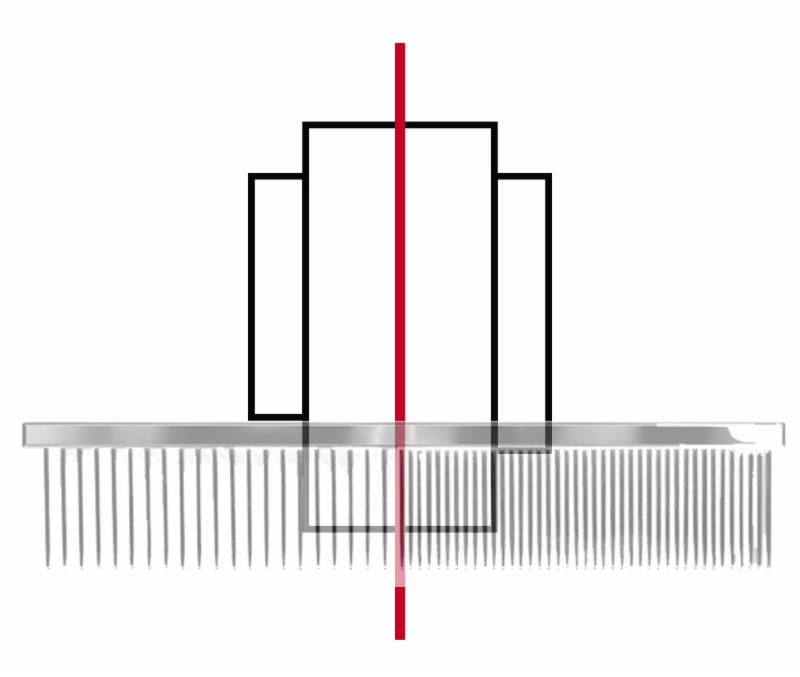 Have you ever wondered why artists extend their thumbs, or hold up a pencil or brush and stare at it at arm’s length? What they’re doing is making visual measurements and that thumb or brush is the ruler.
Have you ever wondered why artists extend their thumbs, or hold up a pencil or brush and stare at it at arm’s length? What they’re doing is making visual measurements and that thumb or brush is the ruler. We all have different reasons why we love our careers. For most of us, our careers started because we were obsessed with dogs and cats. What a fabulous way to make money – doing something you enjoy. My guess is that many of you not only love animals, they’re also a hobby and a huge part of your lives. I know very few career opportunities that allow pet lovers to work in a field that they truly adore.
We all have different reasons why we love our careers. For most of us, our careers started because we were obsessed with dogs and cats. What a fabulous way to make money – doing something you enjoy. My guess is that many of you not only love animals, they’re also a hobby and a huge part of your lives. I know very few career opportunities that allow pet lovers to work in a field that they truly adore. There’s a big difference between grooming efficiently and grooming fast. Grooming efficiently involves doing a good job. Grooming too fast, in my eyes, translates to sloppy work. When I look at developing a grooming team or training new staff members, I always look for people who have the ability to focus and work efficiently.
There’s a big difference between grooming efficiently and grooming fast. Grooming efficiently involves doing a good job. Grooming too fast, in my eyes, translates to sloppy work. When I look at developing a grooming team or training new staff members, I always look for people who have the ability to focus and work efficiently.
 Some dogs receive clear directions from their owners. They have rules and boundaries at home. This makes them very easy to work with in a professional setting. Other pets will not be well-mannered in a professional setting. The personality quirks we all experience working with pets will vary from dog to dog.
Some dogs receive clear directions from their owners. They have rules and boundaries at home. This makes them very easy to work with in a professional setting. Other pets will not be well-mannered in a professional setting. The personality quirks we all experience working with pets will vary from dog to dog. Here is a collection of basic dog postures we see every day. Every position indicates a different attitude. This is by no means everything you will need to know about “reading” dogs. If you are working professionally with them, this is just the tip of the iceberg.
Here is a collection of basic dog postures we see every day. Every position indicates a different attitude. This is by no means everything you will need to know about “reading” dogs. If you are working professionally with them, this is just the tip of the iceberg.